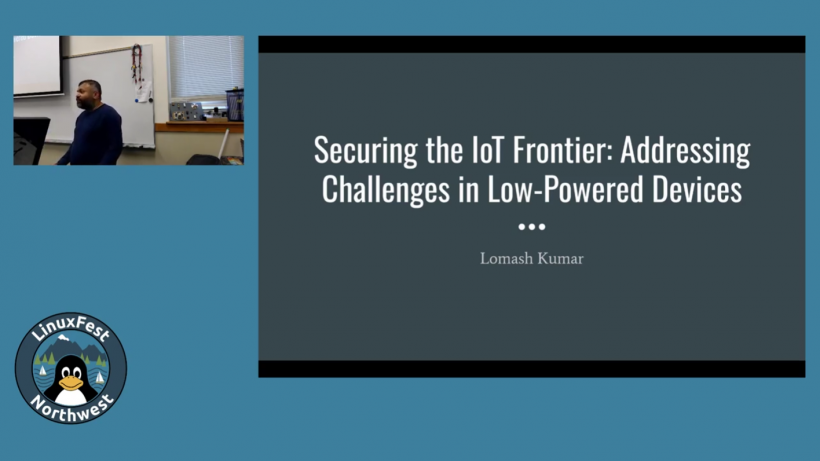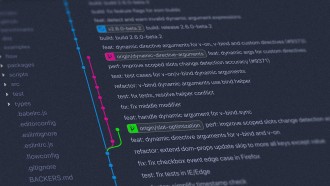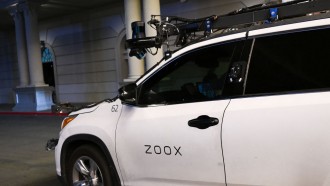
(Photo : LinuxFest Northwest 2024)
Introduction
As IoT continues to permeate various aspects of our lives, from smart homes to industrial automation, securing these devices becomes increasingly critical. The intersection of IoT and AI/ML is particularly significant, as IoT devices generate vast amounts of data that feed AI/ML models, while AI/ML techniques manage and analyze IoT data. Ensuring the security of IoT devices is essential for the integrity of both the devices and the AI/ML applications that depend on them.
The Scope and Growth of IoT
IoT encompasses a wide range of applications, including smart homes, factories, wearables, vehicles, cities, healthcare, agriculture, and retail. The growth of IoT is unprecedented, with billions of devices expected to be connected in the coming years.
This expansion brings significant security concerns:
- Increased Attack Surface: More connected devices mean more potential entry points for malicious actors, necessitating comprehensive security measures.
- Data Privacy and Integrity: Ensuring the privacy and integrity of the vast amounts of data collected and transmitted by IoT devices is paramount.
- Resource Constraints: Many IoT devices operate with limited processing power and memory, complicating the implementation of robust security protocols.
Impact on AI/ML Applications
AI/ML applications rely on the vast data generated by IoT devices for predictive analytics, automated decision-making, and intelligent systems. The integrity of AI/ML models depends on the quality and security of the input data. Compromised IoT devices can produce tampered data, leading to erroneous AI/ML outputs and flawed decision-making. Securing IoT devices is thus crucial for safeguarding AI/ML applications.
Challenges in IoT Security
Securing IoT devices, especially low-powered ones, involves addressing several key challenges. In a recent talk that I gave at LinuxFest Northwest 2024, I discussed some of these challenges and how the engineering community can prepare to address them. The entire talk can be viewed here:
1. Secure Boot
Low-powered devices often lack physical security, making secure boot processes essential to prevent unauthorized code execution. Traditional solutions like UEFI are not natively supported on IoT devices such as Raspberry Pi, Arduino, and Espressif. Implementing secure boot requires additional hardware or custom software, presenting a significant hurdle for engineers new to IoT.
2. Secure Communication
IoT devices typically operate with low bandwidth, making secure communication a challenge. The overhead associated with establishing TLS handshakes can be substantial relative to the data being transmitted. Solutions include session resumption through identifiers or tickets, session caching, connection keep-alive, and connection pooling to reduce the overhead and maintain secure communication channels.
3. Cryptographic Operations
Efficient cryptographic operations are essential for IoT security. Modern System-on-Chips (SoCs) like ESP8266 and ESP32 have made strides in this area, with the latter offering hardware crypto acceleration and secure boot capabilities. However, these features are not always fully utilized or configured correctly, requiring specialized knowledge and careful implementation.
The Need for Robust Security in the Context of IoT and AI/ML Growth
The explosive growth of IoT devices underscores the urgent need for robust security measures. As the number of connected devices increases, so does the complexity of securing these networks. This is especially critical considering the partnership between IoT and AI/ML:
- Scalability of Security Solutions: Security measures must be scalable to accommodate the rapidly growing number of devices without compromising performance. This scalability is crucial for AI/ML models that rely on vast amounts of accurate data from IoT devices.
- Adaptability to New Threats: As IoT technology evolves, so do the tactics of cyber attackers. Security solutions must be adaptable to new and emerging threats to protect both IoT devices and the AI/ML applications that depend on their data.
- Regulatory Compliance: Governments and regulatory bodies are increasingly focusing on IoT security standards. Ensuring compliance with these standards is crucial to avoid legal repercussions, protect consumer trust, and maintain the integrity of AI/ML systems.
By addressing these security challenges, we can create a more secure IoT ecosystem, which in turn will enhance the reliability and robustness of AI/ML applications that rely on IoT data. This symbiotic relationship between IoT and AI/ML underscores the importance of a holistic approach to security in the ever-evolving landscape of connected devices.
About the Author: Lomash Kumar is a Senior Staff Software Engineer at Samsara, specializing in IoT and security innovations. With over 20 years of experience in software and hardware engineering, he has worked at Amazon/AWS IoT and holds several patents. Lomash is a passionate mentor and writer, sharing insights on IoT, security challenges, and their impact on AI/ML applications.
https://www.linkedin.com/in/kumarlomash/
Disclaimer: The views expressed in this article are based on the author's personal experience and expertise. They do not reflect the policies or practices of the author's current or previous employers.





